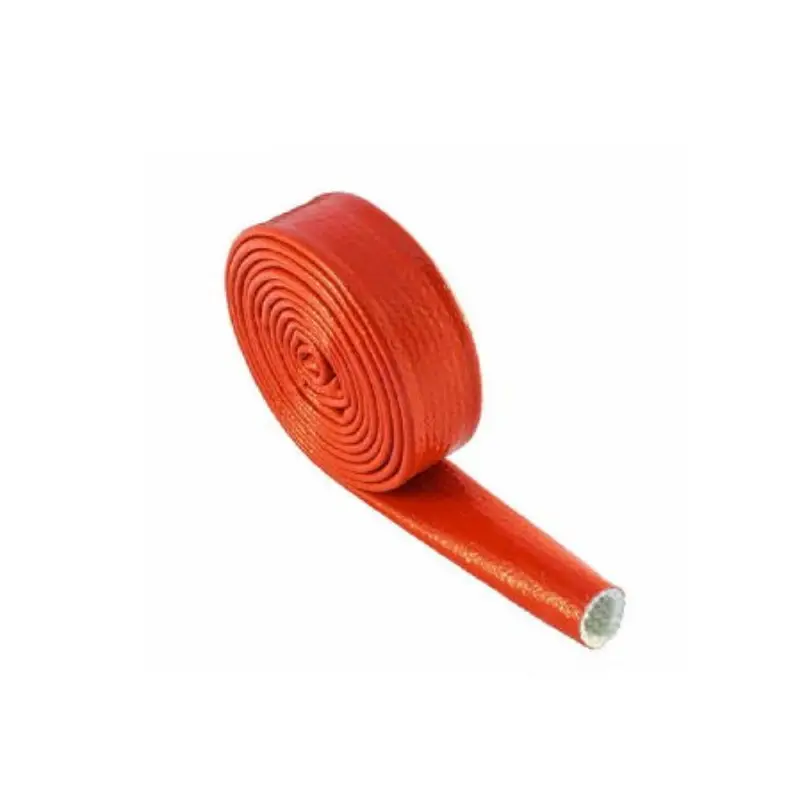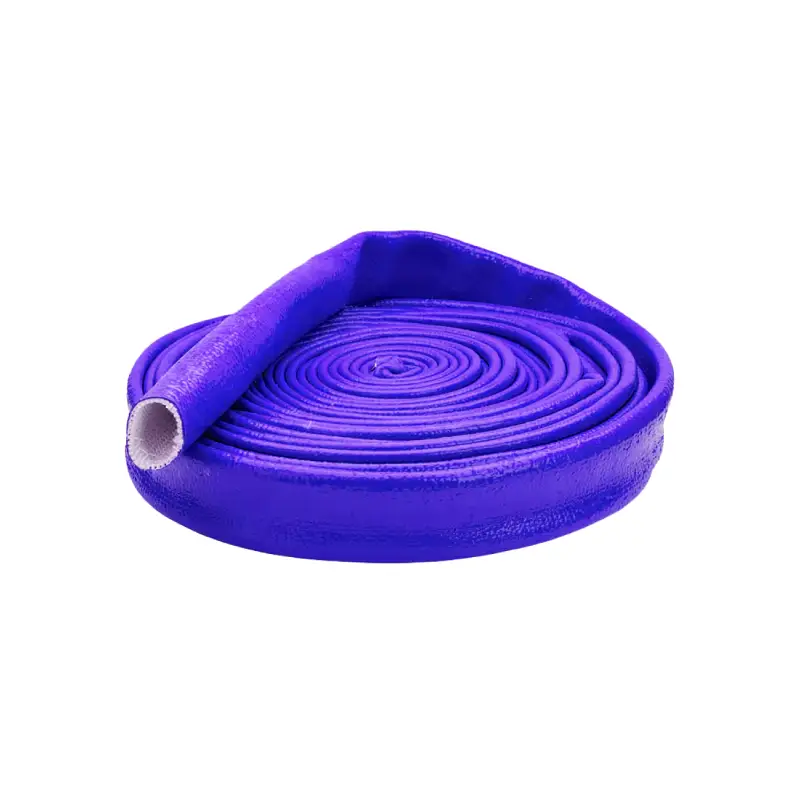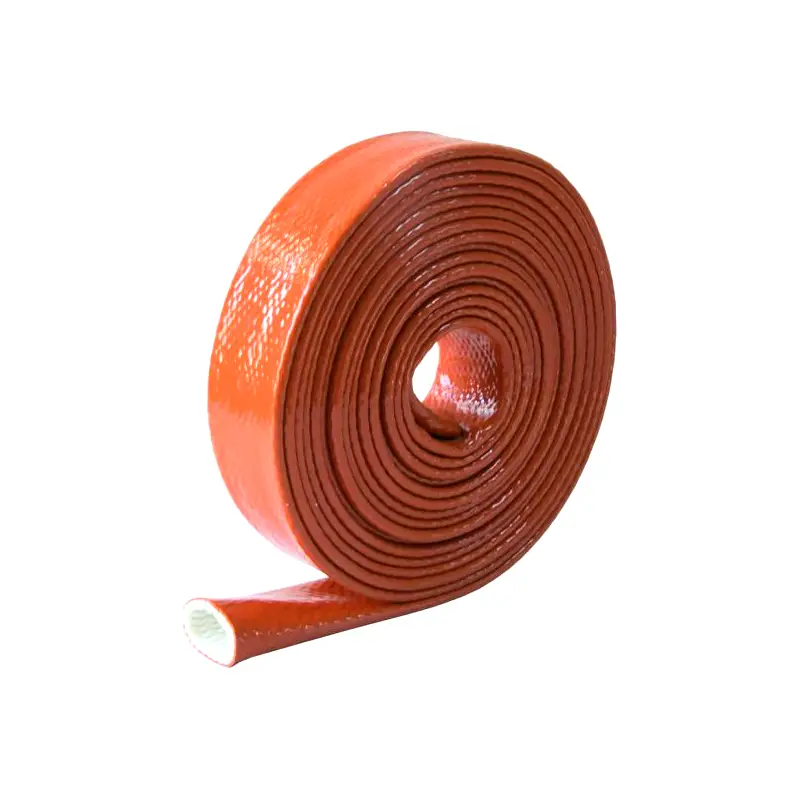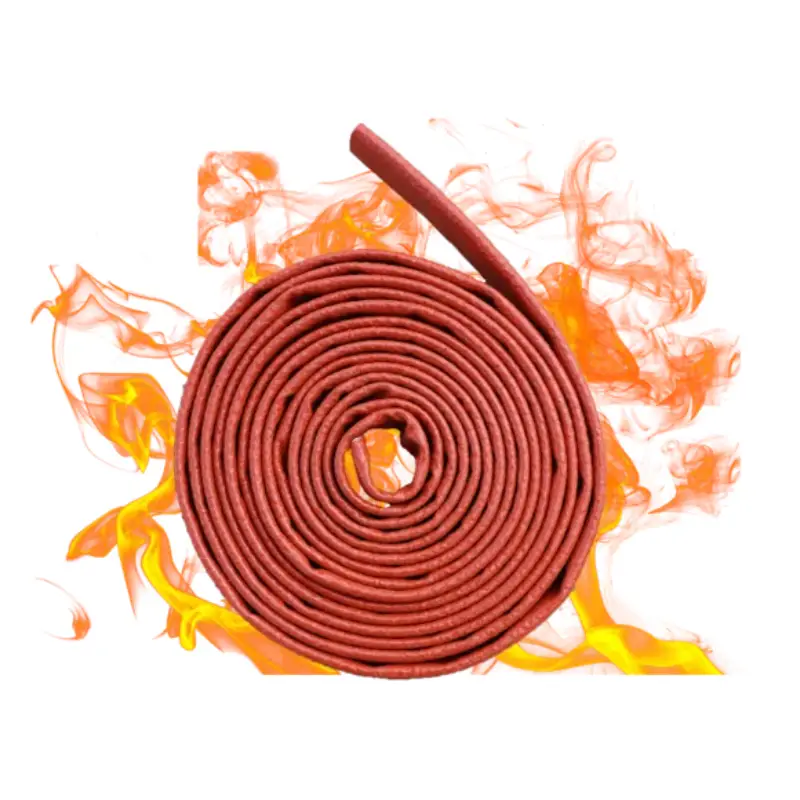We offer fire sleeve hose protectors designed to safeguard hoses from extreme temperatures, abrasion, and molten splashes. These protectors extend service life and ensure reliability in challenging environments, making them an essential choice for hydraulic, industrial, and automotive applications where safety and durability are critical.
Heat Resistance: Our fire sleeve hose protectors withstand continuous exposure to high temperatures, ensuring your hoses stay protected from engine heat, molten metal, or hot working conditions.
Durable Construction: Made from high-quality fiberglass with a silicone coating, they deliver long-term strength, resisting wear, fraying, and degradation in tough environments.
Enhanced Safety: By shielding hoses from fire and heat exposure, they reduce the risk of system failure, downtime, and hazards in demanding industries.
Versatile Applications: Perfect for automotive, aerospace, marine, and hydraulic systems, these protectors are adaptable to many industries requiring reliable hose protection.
Easy Installation: Designed for practical use, the sleeves can be installed quickly over existing hoses, saving time while ensuring maximum protective performance.
As a reliable fire sleeve hose protector manufacturer from China, we specialize in producing high-performance sleeves designed to resist extreme heat, flames, and abrasion. Our protectors are widely used in hydraulic, automotive, marine, and industrial applications. With durable construction and reliable protection, we provide customized solutions to extend hose life and enhance safety in demanding environments.

Superior Heat Protection: Fire sleeve hose protectors safeguard hoses from continuous exposure to extreme heat, preventing premature failure and ensuring system reliability in high-temperature environments.
Extended Hose Lifespan: By shielding hoses from abrasion, flames, and molten splashes, these protectors minimize wear and tear, significantly extending the overall service life of your hoses.
Improved Safety: Protectors reduce the risk of accidents caused by hose failure under heat or fire conditions, ensuring worker safety and preventing costly equipment downtime in critical operations.
Versatile Usage: Suitable for hydraulic, automotive, marine, aerospace, and industrial systems, fire sleeves provide dependable protection across various demanding applications and industries worldwide.
Easy Installation: Designed for convenience, fire sleeves can be quickly installed over existing hoses, saving maintenance time while offering immediate and effective hose protection in harsh conditions.
Hydraulic Systems: Fire sleeve hose protectors shield hydraulic hoses from extreme heat, molten metal, or sparks, ensuring reliability and reducing risks of sudden hose failure in critical operations.
Automotive Applications: Commonly used in engines and exhaust areas, they protect hoses from radiant heat, maintaining system efficiency and extending service life under continuous high-temperature exposure.
Industrial Manufacturing: In welding, steelmaking, and glass industries, they safeguard hoses and cables from sparks and molten splashes, preventing costly downtime and protecting workers and equipment.
Marine and Offshore: Fire sleeves defend hoses and wiring against heat, oil, and harsh marine environments, ensuring safety and durability for ships, rigs, and offshore machinery.
Aerospace and Aviation: Designed for extreme conditions, they protect fuel, hydraulic, and electrical hoses from fire risks, guaranteeing safe operations and compliance with strict industry standards.

We manufacture all fire sleeve hose protectors engineered to withstand extreme heat, flames, and abrasion. Designed for hydraulic, automotive, marine, and industrial applications, our protectors ensure maximum safety and extended hose service life. With durable fiberglass and silicone construction, we deliver reliable solutions customized to meet diverse industry demands and challenging operating environments.

We offer fire sleeve hose guard protectors designed to shield hoses from high temperatures, flames, and abrasive damage. Built with fiberglass and silicone coating, they provide outstanding durability and long-term protection. Perfect for hydraulic, automotive, marine, and industrial uses, our hose guards extend service life and ensure safe performance in the harshest environments.
We offer silicone-coated fire sleeve protectors that provide superior resistance against heat, flames, and abrasion. Built with fiberglass and coated in silicone, these protectors ensure durability and safety in hydraulic, automotive, marine, and industrial systems. Designed for easy installation, they extend hose service life while delivering reliable performance in the toughest environments.

We provide customized hydraulic hose protector sleeves designed to provide superior defense against heat, abrasion, and harsh conditions. Tailored to fit specific hose sizes and applications, our sleeves ensure reliable protection and extended service life. With durable materials and precision design, we deliver solutions that enhance performance and safety across multiple hydraulic systems.
We understand that every application has unique requirements, so we customize our fire sleeve hose protectors to match your exact needs. By focusing on size, material, color, and temperature resistance, we ensure our sleeves deliver reliable performance in the toughest conditions, keeping your hoses safe and extending their operational lifespan.
We provide fire sleeve hose protectors in tailored diameters and lengths to perfectly fit your hoses. This ensures complete coverage, easy installation, and maximum protection without compromising flexibility or durability across different hydraulic and industrial applications.
We customize using premium fiberglass coated with silicone or alternative options depending on your needs. This gives you the best balance of durability, flexibility, and resistance to abrasion, fire, or environmental stressors.
We offer a range of colors to meet your branding, safety, or identification needs. Custom colors make it easier to organize systems, enhance visibility, and comply with specific industry standards in different working environments.
We adjust the temperature resistance levels to your requirements, ensuring sleeves perform in extreme heat or cold. This customization guarantees your hoses remain protected under specific operating conditions, providing safety and reducing downtime in harsh industrial environments.
A fire sleeve hose protector is a specialized protective covering designed to shield hoses, cables, and wires from extreme heat, flames, and molten splashes. Typically made from high-strength fiberglass with a silicone or PVC coating, these sleeves provide durable insulation, prevent abrasion, and help maintain hose integrity in demanding industrial, automotive, or hydraulic applications.
Fire sleeve hose protectors are essential for environments where hoses are exposed to high temperatures, sparks, or harsh conditions. They extend hose service life, enhance safety, and reduce the risk of system failures, making them a reliable solution for hydraulic systems, engines, manufacturing equipment, and marine or aerospace operations.
Fire sleeve hose protectors are used to safeguard hoses, cables, and wires from extreme heat, flames, sparks, and abrasion. They are widely applied in hydraulic, automotive, industrial, and marine environments to enhance safety, extend hose life, and ensure reliable performance under harsh operating conditions.
Hydraulic Systems Protection: Fire sleeve hose protectors shield hydraulic hoses from high temperatures and sparks, preventing system failures. They maintain fluid flow integrity, reduce downtime, and ensure safety in industrial, automotive, and heavy machinery applications, even under continuous high-heat exposure.
Automotive Engine Areas: These protectors are used around engines and exhaust components to defend hoses and cables from radiant heat, sparks, and friction. This protection improves durability, prevents damage, and ensures smooth operation of vehicles under demanding conditions.
Industrial Manufacturing Safety: In welding, metal processing, and other industrial operations, fire sleeves protect hoses from molten metal, sparks, and high-temperature environments. This reduces equipment damage, safeguards employees, and minimizes costly operational interruptions.
Marine and Offshore Applications: Fire sleeve hose protectors safeguard hoses and wiring against heat, oil, and harsh marine conditions. They ensure durability, safety, and reliable performance for ships, offshore rigs, and heavy machinery operating in challenging environments.
Aerospace and Aviation Uses: These sleeves protect hydraulic, fuel, and electrical hoses in aircraft from fire hazards and high temperatures. They contribute to operational safety, regulatory compliance, and long-term reliability in extreme conditions.
Choosing fire sleeve hose protectors ensures maximum safety, durability, and performance for hoses, cables, and wires exposed to extreme heat, sparks, and abrasive conditions. They are essential for hydraulic, automotive, industrial, and marine applications, providing long-lasting protection and minimizing downtime in challenging working environments.
Enhanced Safety: Fire sleeve hose protectors reduce the risk of hose failure and fire hazards. By shielding hoses and cables from heat, flames, and sparks, they protect equipment, personnel, and the overall system from potential accidents or costly damages.
Extended Hose Life: These protectors prevent abrasion, friction, and thermal damage, significantly extending hose service life. This reduces replacement frequency, maintenance costs, and operational interruptions, ensuring your systems remain reliable and efficient over time.
Versatile Applications: Suitable for hydraulic, automotive, industrial, marine, and aerospace environments, fire sleeve hose protectors adapt to different hose types and sizes, providing reliable protection in a wide range of industries and harsh operating conditions.
Durable Construction: Made from high-strength fiberglass with silicone or PVC coatings, they withstand extreme temperatures, sparks, and abrasion. This durability ensures consistent performance even in the toughest environments, offering a cost-effective protective solution.
Easy Installation: Designed for practical use, fire sleeve hose protectors can be quickly installed over existing hoses without special tools. This simplifies maintenance, saves time, and provides immediate protection in critical applications.